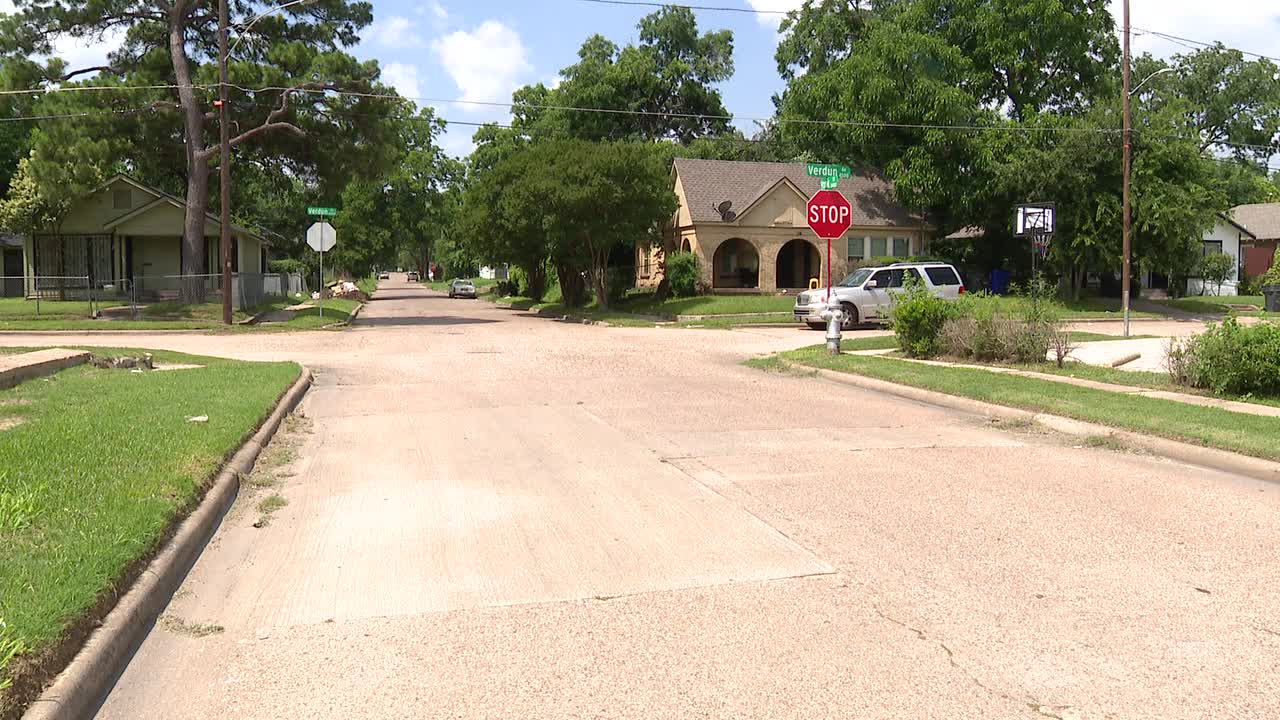Rhode Island
The state will ultimately pay $132m to build a soccer stadium in Pawtucket. How did it get so expensive?

USMNT opens 2026 World Cup at SoFi Stadium
FIFA announced the schedule for the 2026 World Cup. The U.S. Men’s National Team will open at SoFi Stadium, while MetLife Stadium will host the World Cup final.
Fox – LA
The Tidewater Landing stadium in Pawtucket is on track to open early next year and, when it does, the 10,500-seat building is expected to be the most expensive minor league soccer stadium in the country.
That’s not a shock given the rising cost of construction, but even the state economic development officials who signed off on the project didn’t know just how steep the price of publicly financing the stadium would climb.
To channel $27 million to stadium developer Fortuitous Partners, Pawtucket earlier this month sold a $54.3 million tax-free bond. Under the terms of the bond, the state is projected to pay $132 million in total debt service over the next 30 years.
Those borrowing costs – which Bloomberg’s municipal bond reporter compared to the price of government debt in Pakistan – have triggered sticker shock in some quarters.
“My concern is how this got to be so expensive and such an enormous waste of taxpayer money,” said Michael McNally, a former member of the state Commerce Corporation Board who voted against the project in 2022.
But Rhode Island Commerce Secretary Liz Tanner, who has overseen the deal for the state for the last two years, on Monday defended the deal over the long term.
“Stadiums are expensive. We know that they’re expensive, and these dollars that we’re putting into it are going to have a nice infrastructure project for us when we’re done,” Tanner told The Journal Monday. “We know we’re going to have a stadium when we’re finished with a soccer team, and that’s good for Rhode Island.”
How did we get here? Shrinking project but expanding cost
The Tidewater Landing stadium plan first launched in December 2019, with the city still stinging from the loss of the Pawtucket Red Sox baseball team.
Initially the stadium was supposed to anchor a $400-million development spanning the Seekonk River and Interstate 95, containing hundreds of apartments plus shops, offices, a hotel and an event center.
The state first approved a $50-million public subsidy package for the development in February 2021 after the segment north of I-95 had been eliminated, slimming the project down to 25 acres.
But before work could begin, inflation spiked and the Federal Reserve hiked interest rates, sending the cost to complete the project soaring. The stadium is now expected to cost $137 million.
In the summer of 2022, Fortuitous shrank the project again, this time asking for the same public investment, but it would go to the stadium alone. On July 25, 2022, Gov. Dan McKee broke a tie on the Commerce Corporation Board to give almost all of the subsidy package to the stadium.
Public funds going to Fortuitous, once they finish the stadium, are made up of:
- $27 million from the bond
- $10 million in Pawtucket’s federal pandemic aid
- $10 million from state tax credits. (The state is issuing $14 million in Rebuild RI tax credits to net $10 million.)
But the cost of the borrowing keeps going up. When the deal was approved, the state planned to provide Fortuitous $27 million for the stadium from a $37-million bond. By October, with higher interest rates prompting investors to demand ever higher yield, the principal on the bond grew to $54 million, including reserves and administrative costs.
The deal allows the state to make interest-only payments on the bonds for the first 10 years. There’s a $5-million reserve in place to make payments in any year the General Assembly were to decide not to appropriate the required funding. And there is an $11-million “capitalized interest fund” that will fund payments in the early years.
Of the $54-million principal borrowed, $6 million is set aside to pay middlemen, lawyers and other administrative expenses, according to a breakdown from Commerce RI.
Why didn’t the state just pay less two years ago?
Why didn’t the state just appropriate $27 million for the stadium two years ago and save the tens of millions required by this exotic financing?
“When this project started a couple of years ago, this was the deal that was made, as far as how it was going to unfold, and all of those conversations were based on far lower interest rates,” Tanner said. “The $27 million, if it had been done upfront, would have to had been General Assembly approved.”
More: Soccer stadium bond adviser cited ‘concerns’ about project before quitting. What we know.
Since authorizing this type of state financing for a proposed new PawSox ballpark, legislative leaders have been cool to the idea of a direct investment into the soccer stadium.
Why not change the deal as economic conditions changed over the years?
“So we had committed to a deal at that point and we were in a contractual relationship to commit to following through with what we had done,” Tanner said. “And if you had changed the course of the transaction, there would’ve been a level of uncertainty without knowing whether the legislature was going to pass those dollars or not. So we continued on the path that we had set up originally.”
Although the Pawtucket Redevelopment Agency issued the stadium bonds, they are to be repaid with state tax revenue generated in Pawtucket, supplemented if need be by appropriations from the Assembly.
Because of the money set aside, state lawmakers won’t have to appropriate any money for the stadium until 2027.
Tanner said if interest rates rise again, the 8.24% rate the state is paying will end up looking like a bargain. If they fall, it is likely the state will be able refinancing after 10 years at a lower rate.
Is this 38 Studios all over again?
The complicated financing structure of the stadium bonds recall the $75-million 38 Studios deal.
Unlike the 38 Studios bonds, which were supposed to “pay for themselves” through revenue from the company that ended up folding, the stadium bonds are intended to be repaid by state tax dollars.
The risk to the state lies in what would happen if Rhode Island FC, the team slated to play in the stadium, folds, something not uncommon in professional soccer.
As it awaits the construction of the soccer stadium, Pawtucket is planning to tear down McCoy Stadium, which assumed negative value once the PawSox left.
More: Pawtucket soccer stadium’s financing is complete. Here’s what’s behind the $137M project
“[Rhode Island FC] did commit to a 30-year relationship with us,” Tanner said. “If they don’t, there’s liquidated damages that they would have to pay.”
Asked what those damages would be worth if the team goes bankrupt, Tanner said the state would get the stadium as an asset.
What would the empty stadium be worth?
“Again, we’re doing speculation on so many ifs,” she said.
To encourage Fortuitous to finish the residential and commercial development that initially attracted the state to the project, Commerce RI is providing the developer $1.5 million to start working on that next phase.
There is still no timeline on when any plans for stadium-adjacent development will be drawn up or cost estimates formulated.
Tanner said, if anything, she is “far more optimistic” about the residential/commercial development happening “because they have their investors all gathered to work on the stadium project and so we know there’s more people who have already committed the stadium that could be potentially partnering with them.”

Rhode Island
Multiple arrests made by Rhode Island State Police over the weekend – Newport Dispatch

PROVIDENCE — Rhode Island State Police conducted a series of arrests over the weekend, booking multiple individuals on various charges ranging from embezzlement to driving under the influence.
On Saturday, May 18, at 9:25 a.m., Troopers took David Williams, 39, of Cranston, into custody during a traffic stop on Route 95.
Williams faced charges including obstructing an officer, embezzlement, a bench warrant for failing to appear in court, and driving with a suspended license.
After processing at State Police Headquarters, he was handed over to the Cranston Police Department.
Later that day, at 4:30 p.m., Jennifer Irizarry, 39, of Providence, was arrested for possession of over 10 grams of cocaine.
Irizarry’s arrest, also the result of a traffic stop, led to her being processed, arraigned, and transferred to the Adult Correctional Institution Women’s Intake Center.
At 5:36 p.m., Jose Torres, 52, also of Providence, was apprehended for driving under the influence with a blood alcohol content (BAC) significantly above the legal limit.
Torres was released after his arraignment, with a court date pending at the Sixth Division District Court.
The arrests continued into the night when David Chavez, 20, of Warwick, was stopped on Route 6 East at 11:43 p.m. and arrested for driving under the influence with a BAC just over the .15 threshold.
Chavez was held overnight at the Lincoln Woods Barracks.
The following morning, Sunday, May 19, at 2:39 a.m., Socrates Acosta Bonilla, 42, of Providence, faced charges of driving under the influence and refusal to submit to a chemical test after being stopped on Branch Avenue.
Bonilla was released pending a future court appearance.
Minutes later, at 2:48 a.m., Stephanie Lanoue, 37, of Woonsocket, was arrested on Route 146 North for driving under the influence and refusing a chemical test, marking her second offense.
Lanoue was processed and released with a court date set at the Third Division District Court.
Rhode Island
Razing encampments satisfies the public, hurts the homeless | Opinion
Rebecca Karb, MD, is an emergency and Street Medicine physician.
Under the guise of public health and safety, Providence Mayor Brett Smiley recently announced plans to evict people from several large tent encampments in Providence.
It is important for us to be open and transparent about this fact: forced displacement of people from encampments does nothing to end homelessness. We have seen time and again that when we break up encampments in one location, new encampments emerge in other locations. The people living in those encampments do not just disappear, and predictably end up back outside in the absence of a comprehensive plan for permanent supportive housing. Far from helpful, encampment sweeps cost money, waste valuable time and resources, and are ultimately counterproductive.
On any given night in Rhode Island there are around 1,800 people experiencing homelessness, and this number is on the rise. In the wake of the pandemic, the housing supply has dwindled (the rental vacancy rate in Providence is at a low of about 3%, far below the preferred 6% to 8% needed to defend against constant upward pressure on rental prices) and affordable housing is scarce. Providence boasts the highest rental cost increases in the country over the past year.
More: Last year, ‘pallet shelters’ looked like a quick way to provide cheap roofs. Where are they?
Meanwhile, there are only 1,125 shelter beds, with over 600 people on a waiting list. All of these factors have contributed to the rise in unsheltered homelessness (people forced to sleep in uninhabitable spaces such as tent encampments, sidewalks, parks, and abandoned buildings). The encampments seen on the sides of streets or tucked behind parks are evidence of our systemic failure to address the spiraling housing crisis.
It can be difficult to bear witness to human beings living in such inhumane conditions so close to us, and perhaps natural to want to remove from sight a reality that elicits such complicated and contradictory emotions as sadness, guilt, empathy, fear and anger. To be fair, encampments are inherently unhealthy places to live. The lack of access to running water, bathrooms, electricity, and protection from the elements all pose significant health risks.
However, encampments also offer advantages to people experiencing unsheltered homelessness. Communal living on the street provides safety, security for people’s belongings, companionship, and the sharing of pooled resources to meet basic needs. Encampments allow couples, families and pets to stay together when there are no shelter options. Encampments also allow social service and medical teams reliable and consistent access to provide services and support.
Encampment sweeps harm people experiencing homelessness and undermine the work that outreach teams have been doing to build trust and connect individuals with resources and medical care. Sweeps disrupt daily routines and force individuals to spend time, energy and money on figuring out new sleeping arrangements, re-working transportation routes, and replacing lost or damaged supplies, documents and medications. Following sweeps, individuals can become disconnected from outreach teams, lost to follow up, and derailed from often hard-fought-for treatments plans.
More: RI has a Homeless Bill of Rights. Why advocates say it needs an expansion.
For example, our Street Medicine team will need to spend valuable time and energy simply locating patients in new places, and we will inevitably lose contact with some patients with whom we have worked hard to establish trusting relationships. This compromises the quality of care we are able to provide, and ultimately leads to worse health outcomes for this already underserved population.
The high costs of these disruptions to community and safety are certainly not worth the perceived (but false) public perception that encampment sweeps are solving the problem of homelessness. It is time for our government leaders to offer real solutions in the form of an adequate supply of safe, affordable, supportive housing and low-barrier access to health care.
Until that can be offered, do not destroy the communities of care, resilience and support that people form to survive the harsh reality of homelessness and do not make it more difficult for the social service providers and medical outreach teams who are trying to serve them.
Rhode Island
OSU Basketball: Cowgirls Add Rhode Island Transfer Center

Oklahoma State has its newest addition for next season.
OSU women’s basketball announced on Saturday that the team has signed Tenin Magassa. As the latest addition to Jacie Hoyt’s team, Magassa will play her fifth season of college basketball in Stillwater.
Magassa adds size for the Cowgirls at 6-foot-5 and could compete for a starting role next season, considering her abundance of experience. Spending the past two seasons at Rhode Island, Magassa emerged as a regular starter for the Rams in 2023-24.
Last season, she averaged seven points, 4.6 rebounds and two blocks. She started 12 of 29 games but also had success off the bench, with four of her six double-figure scoring games coming as a reserve.
As a junior, she played only 14 games near the end of the season. Still, Magassa finished strong and had a season-high 12 points and eight rebounds in the team’s WNIT opening win against Boston University.
READ MORE: OSU Basketball: Former Cowgirl Star Makes First WNBA Start
Before going to Rhode Island, Magassa spent her first two seasons at Dayton. As a freshman, she averaged 9.6 points, 7.3 rebounds and 2.5 blocks to make the A-10 All-Freshman Team.
In 2021-22, she started 19 of her 31 games, helping Dayton go 26-6 and make the NCAA Tournament for the first time in four seasons. Although her usage was down, she still averaged 5.9 points, 6.2 rebounds and 2.1 blocks.
Coming off of an injury-riddled season that kept the Cowgirls out of the NCAA Tournament, Magassa and other additions give the team hope. After a 14-16 season, the Cowgirls are poised to be back competing in the Big 12.
READ MORE: OSU Softball: Poullard and Davis Shine; Cowgirls Take Down Northern Colorado
Want to join the discussion? Like AllPokes on Facebook and follow us on Twitter to stay up to date on all the latest Cowboys news. You can also meet the team behind the coverage.
-

 World1 week ago
World1 week agoIndia Lok Sabha election 2024 Phase 4: Who votes and what’s at stake?
-

 News1 week ago
News1 week agoSkeletal remains found almost 40 years ago identified as woman who disappeared in 1968
-

 Politics1 week ago
Politics1 week agoUS Border Patrol agents come under fire in 'use of force' while working southern border
-

 Politics1 week ago
Politics1 week agoTales from the trail: The blue states Trump eyes to turn red in November
-

 World1 week ago
World1 week agoBorrell: Spain, Ireland and others could recognise Palestine on 21 May
-

 World1 week ago
World1 week agoCatalans vote in crucial regional election for the separatist movement
-

 World1 week ago
World1 week agoEurope matters to consumers, and so does your vote
-

 Politics1 week ago
Politics1 week agoNorth Dakota gov, former presidential candidate Doug Burgum front and center at Trump New Jersey rally


















